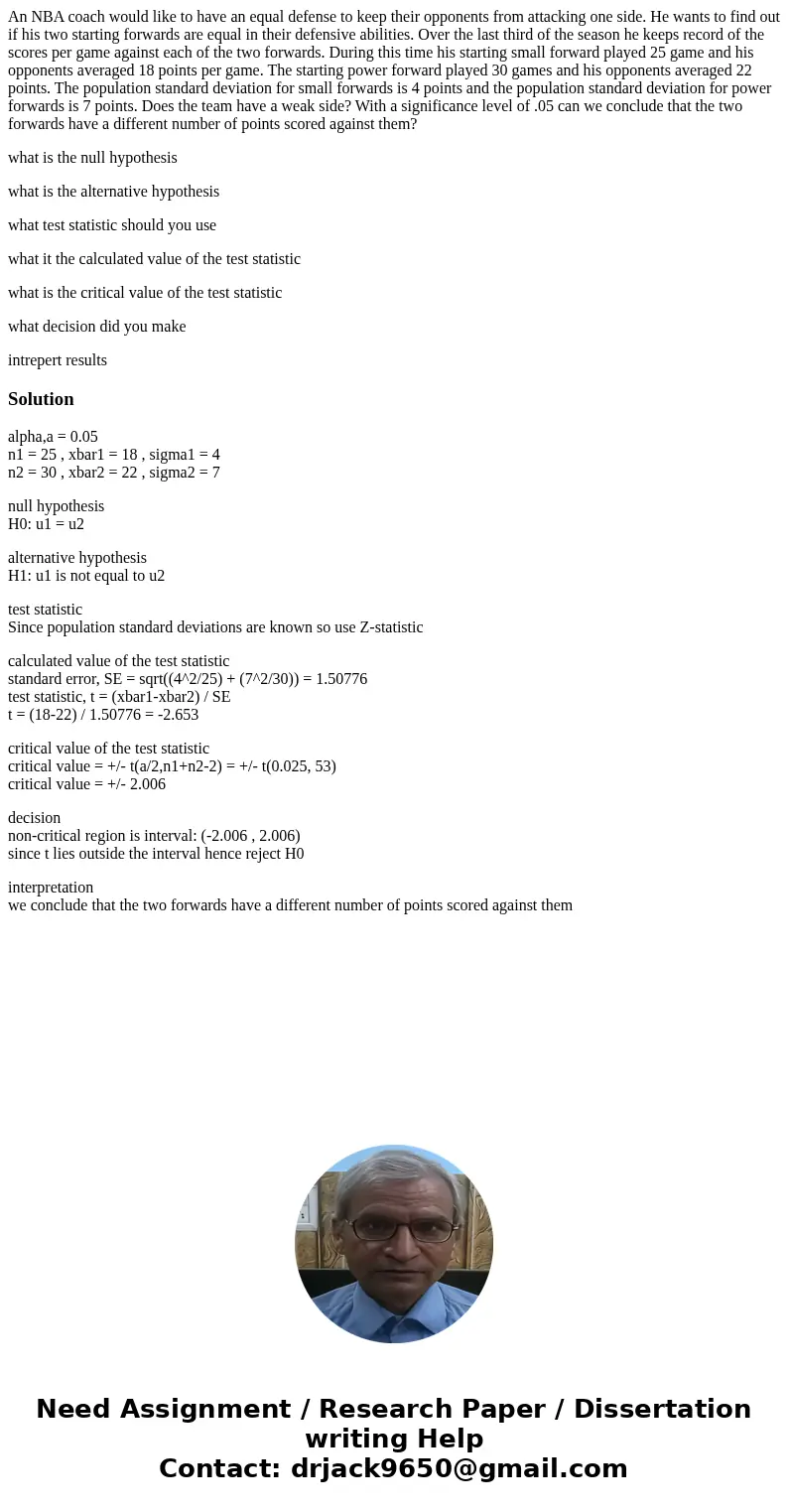An NBA coach would like to have an equal defense to keep the
An NBA coach would like to have an equal defense to keep their opponents from attacking one side. He wants to find out if his two starting forwards are equal in their defensive abilities. Over the last third of the season he keeps record of the scores per game against each of the two forwards. During this time his starting small forward played 25 game and his opponents averaged 18 points per game. The starting power forward played 30 games and his opponents averaged 22 points. The population standard deviation for small forwards is 4 points and the population standard deviation for power forwards is 7 points. Does the team have a weak side? With a significance level of .05 can we conclude that the two forwards have a different number of points scored against them?
what is the null hypothesis
what is the alternative hypothesis
what test statistic should you use
what it the calculated value of the test statistic
what is the critical value of the test statistic
what decision did you make
intrepert results
Solution
alpha,a = 0.05
n1 = 25 , xbar1 = 18 , sigma1 = 4
n2 = 30 , xbar2 = 22 , sigma2 = 7
null hypothesis
H0: u1 = u2
alternative hypothesis
H1: u1 is not equal to u2
test statistic
Since population standard deviations are known so use Z-statistic
calculated value of the test statistic
standard error, SE = sqrt((4^2/25) + (7^2/30)) = 1.50776
test statistic, t = (xbar1-xbar2) / SE
t = (18-22) / 1.50776 = -2.653
critical value of the test statistic
critical value = +/- t(a/2,n1+n2-2) = +/- t(0.025, 53)
critical value = +/- 2.006
decision
non-critical region is interval: (-2.006 , 2.006)
since t lies outside the interval hence reject H0
interpretation
we conclude that the two forwards have a different number of points scored against them

 Homework Sourse
Homework Sourse